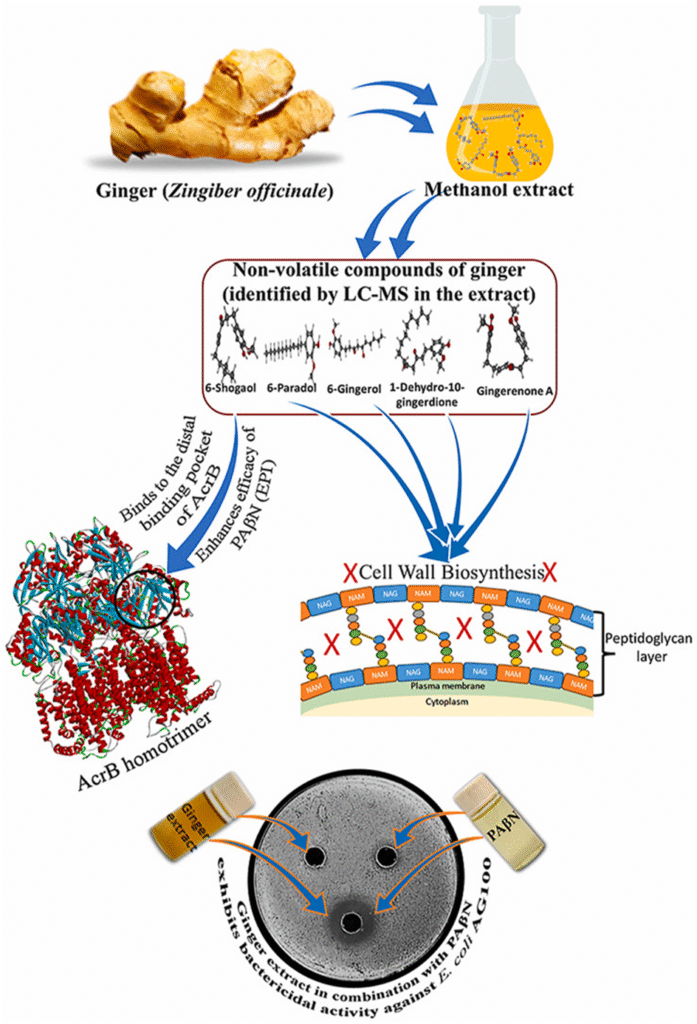

Published in: Microbial Pathogenesis
Volume 204, July 2025, 107624
DOI: 10.1016/j.micpath.2025.107624
Authors: Soumitra Moulick [TCGLS Member], Rammohan Bera[TCGLS Member], Dijendra Nath Roy
Abstract: The emergence of multidrug-resistant Escherichia coli is considered a severe threat to global health, largely attributed to the bacterium’s ability to expel antibiotics via efflux pump systems. This study explores the antibacterial efficacy of a methanol extract derived from Zingiber officinale R. (ginger), a traditional medicinal spice, against an E. coli strain overexpressing the AcrAB-TolC efflux system. To evaluate the extract’s efficacy, three E. coli strains were tested: AG100 (AcrAB-TolC+), AG100A (ΔAcrAB), and D22 (lpxC mutant). The ginger extract exhibited antibacterial activity against E. coli AG100A and D22, with minimal inhibitory concentrations (MIC) and minimal bactericidal concentrations (MBC) of 625 μg/mL. However, the extract showed no inhibitory effect against E. coli AG100, even at 10 mg/mL, suggesting the AcrAB-TolC system plays a key role in resistance. Notably, combining the extract with an efflux pump inhibitor (EPI) strongly enhanced its bactericidal effect, reducing the MBC for AG100 to 313 μg/mL. EtBr accumulation assays confirmed that the ginger extract, in combination with EPI, amplified intracellular drug retention, peaking fluorescence within 30 min and sustaining elevated levels over 60 min. Molecular docking further revealed that bioactive compounds such as 6-shogaol strongly bind within the binding domain of AcrB homotrimer, inhibiting pump function. Additionally, cell wall biosynthesis assays demonstrated 69–75 % inhibition when the ginger extract was used at 2-fold–4-fold its MIC in the presence of EPI, further intensifying bactericidal effects. These results underscore ginger’s dual-action mechanisms, highlighting its potential as an effective natural antimicrobial agent against drug-resistant E. coli.
